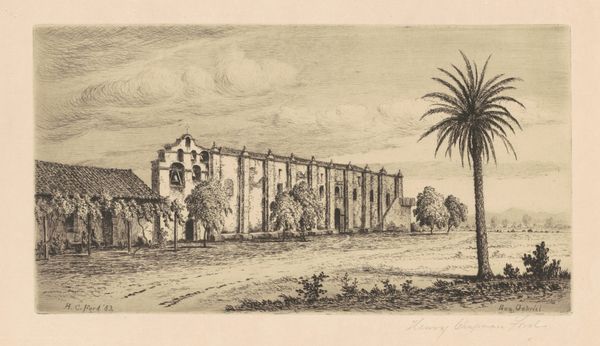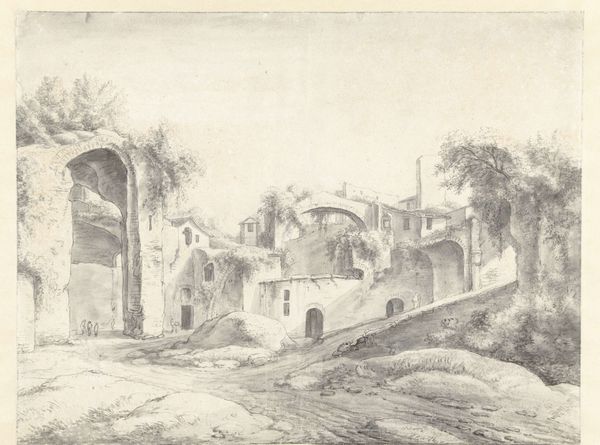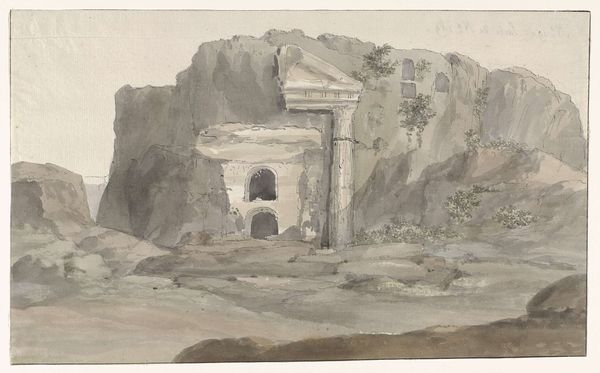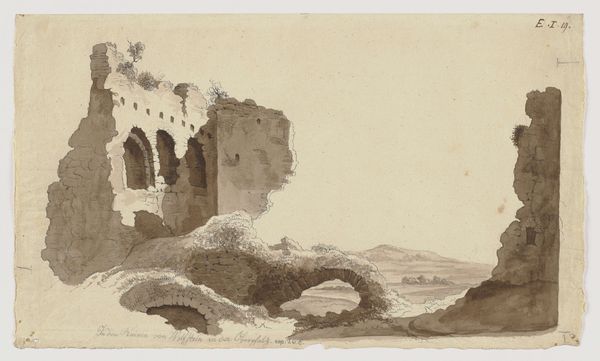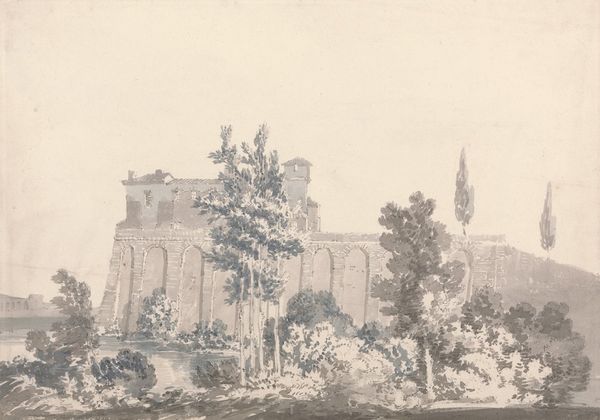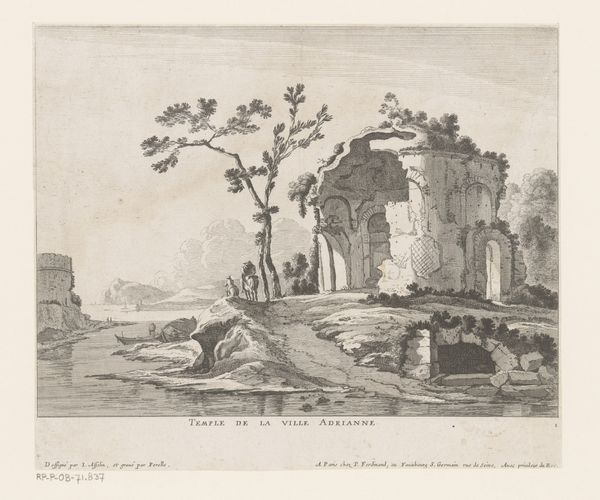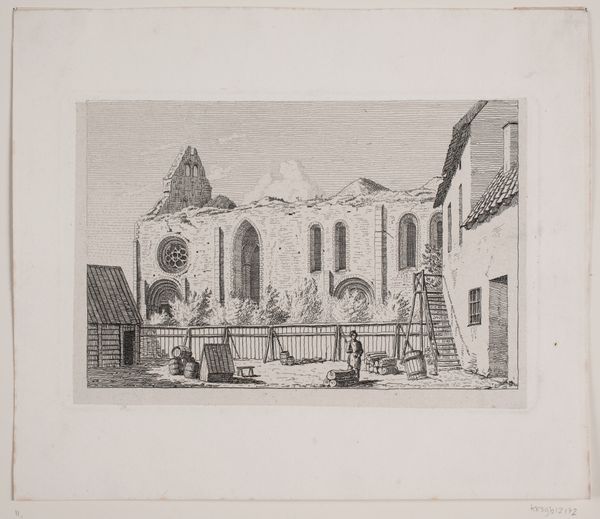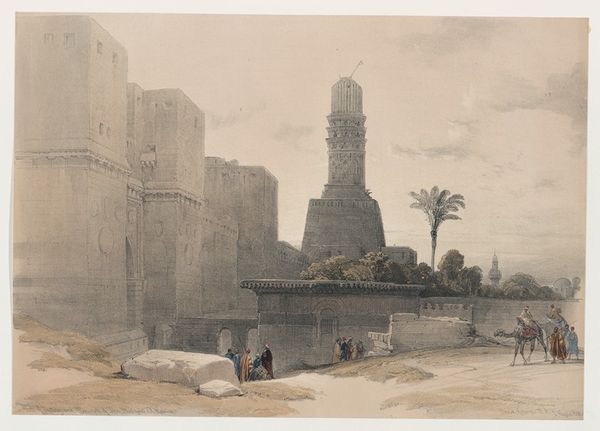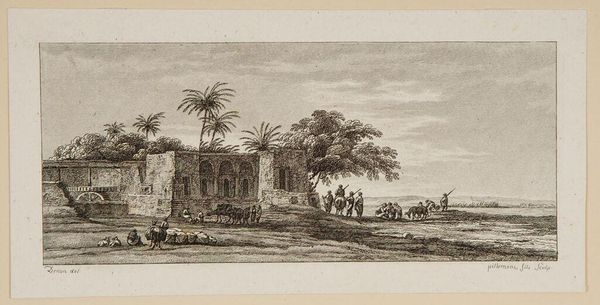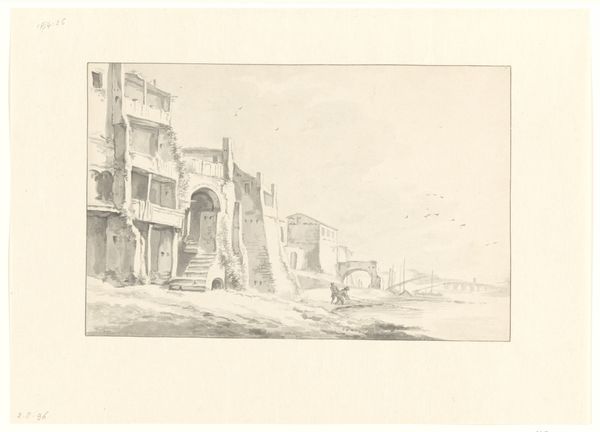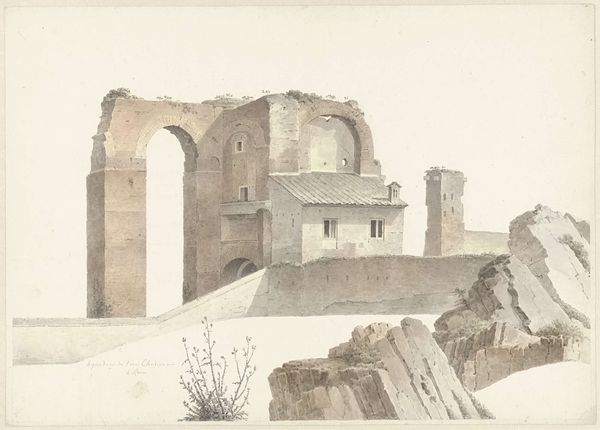
painting, watercolor
#
water colours
#
painting
#
landscape
#
ancient-egyptian-art
#
watercolor
#
classicism
#
ancient-mediterranean
#
history-painting
#
watercolor
Copyright: Public Domain: Artvee
Curator: Looking at this artwork, titled "Wady Maharraka, Nubia. Nov. 14th, 1838," painted between 1846 and 1849 by David Roberts, I'm struck by its evocative rendering of a site charged with history and colonial ambition. Editor: Yes, my immediate sense is of decay. The warm watercolor palette, the ruin depicted—it speaks to me of time’s relentless effects on human endeavor and the hubris of empires. Curator: Exactly. Roberts was a master of depicting the archaeological sites of the Near East and beyond, tapping into a burgeoning European interest in antiquity and exploration, and this piece showcases just that. Think of the social and political dimensions; it's a moment of heightened cultural interaction, or perhaps even appropriation. Editor: Right. The materiality here intrigues me, particularly how the watercolors allow Roberts to convey the eroded textures of the stone. Consider the labor involved—the pigments sourced, the paper made. This wasn’t simply observation; it was a process involving an industry that commodified these views for a European audience hungry for the exotic. Curator: Absolutely. These images weren’t just artistic records; they became crucial documents, influencing public perception of the Middle East. Roberts tapped into, and furthered, narratives about the “glory” of the past while conveniently ignoring or erasing contemporary local contexts and communities. Editor: And the deliberate detail in the architectural remnants compared to the looser rendering of the landscape around it. He emphasizes the weight and permanence of these structures while acknowledging their eventual surrender to nature, don’t you think? Curator: I do. And think about the role these images played back in Britain. They were exhibited in galleries, reproduced in books, feeding the Victorian imagination and bolstering Britain’s own sense of imperial power. It’s a cycle of observation, representation, and cultural dominance, all captured in this delicate medium. Editor: A stark reminder of the layers embedded in visual representation. Thanks for unfolding the historical complexities—I’m seeing more than just crumbling stones now. Curator: And thank you for drawing our attention to the art's construction, and thus reminding us how intertwined are materials and message. It has been enlightening!
Comments
No comments
Be the first to comment and join the conversation on the ultimate creative platform.
